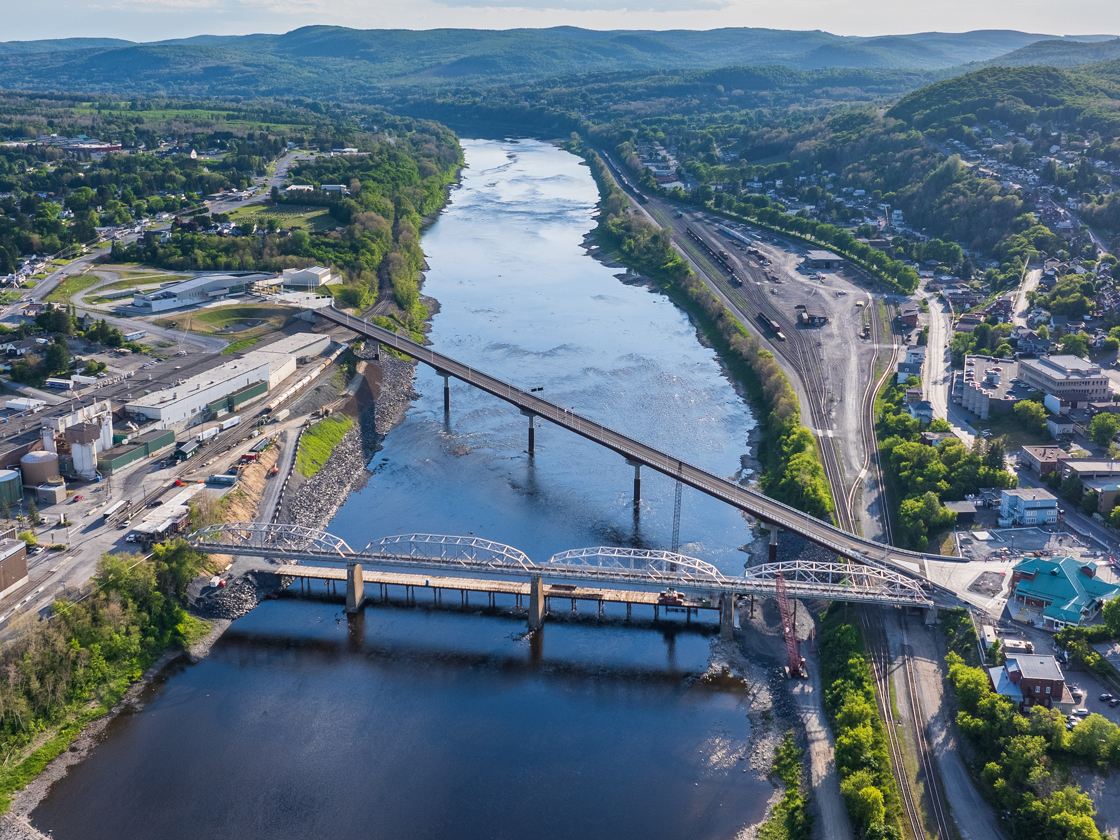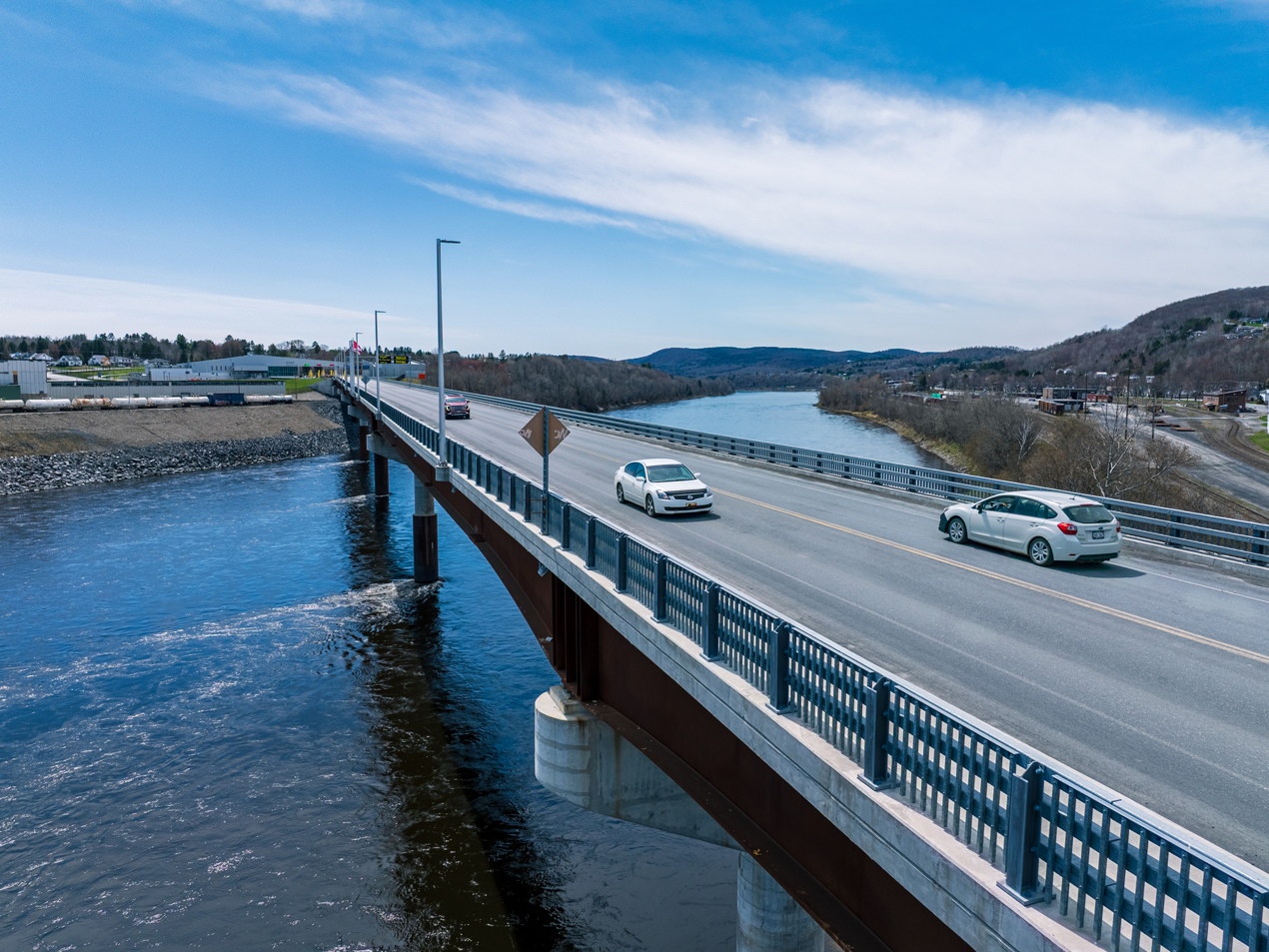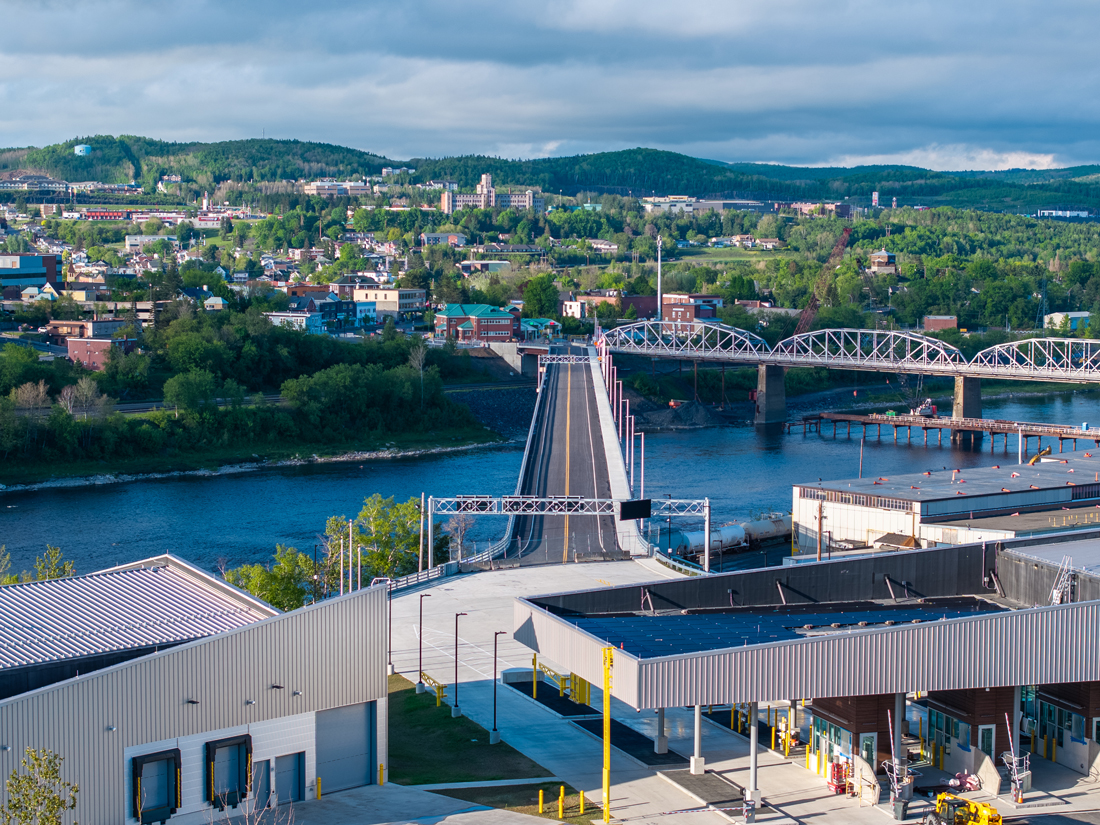The international bridge spanning from Madawaska, Maine to Edmundston, New Brunswick, Canada serves as the sole link between one, close-knit, mixed-national community. When inspection of this critical structure’s load capacity called for all truck traffic to travel through the next border crossing — approximately 20 miles away — MaineDOT and other stakeholders recognized the significant effect this would have on the community.
Within four years, working alongside MaineDOT, HNTB evaluated and designed a replacement long-span bridge structure to restore critical connection.
A Complicated Project Site
The site location and numerous, international stakeholders led to incredibly complex project considerations. The new bridge was relocated and positioned diagonally across the St. John River to accommodate the move of the U.S. Land Port of Entry (LPOE) to a new location to the west of its former facility. In addition to working in the cold climate, designing the bridge on the steep river valley had its challenges, including difficult site access and fluctuating water levels with heavy ice floes. Significant coordination was required to establish the new abutment locations while balancing needs of the railroads, port facilities, underground utilities, physical constraints of the existing and proposed structures, and the timing of overlapping construction projects and work sites. Significant coordination with two active railroads on each side of the river and an active paper mill — the area’s largest employer — was necessary to identify access to the river for construction while also not interrupting daily activities.
Cross-National Stakeholder Coordination
Public outreach and stakeholder coordination, in both English and French, was a top priority throughout the project. Stakeholder groups included the First Nations, railroad companies, paper mill, permitting agencies and numerous U.S. and Canadian government agencies responsible for constructing and operating the port facilities. The international aspect of the crossing required close coordination with these stakeholders to understand and adhere to two sets of security requirements, differing permitting requirements on each side of the river, and gain an understanding of labor and material delivery restrictions that would impact construction access and limitations.
Maintaining Pedestrian Access
Maintaining pedestrian access throughout construction was critical for those living and working on opposite sides of the border. Significant coordination was required to establish the new abutment locations while balancing needs of all stakeholders. Due to sight distance requirements at the port facilities and limitations on the magnitude of changes at the Canadian port facility, pedestrian access was carefully maintained through minor construction phasing, security fencing, temporary lighting and reduced shoulder widths during construction.
Replaced and Reconnected
The six-span, steel girder bridge reaches an overall length of 1,840 feet and has restored a crucial connection for the community. The four-girder-designed system supports two lanes of traffic, six-foot shoulders for multimodal traffic and a six-foot sidewalk for pedestrians.
Client: Maine Department of Transportation (MaineDOT)
Location: Madawaska, ME and Edmundston, New Brunswick, Canada
Services: Planning, preliminary, final design, construction support
Awards: ACEC Maine Grand Conceptor, 2025





